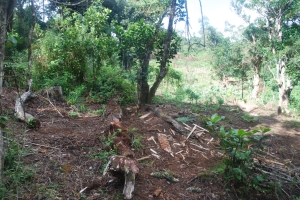Interesting Paper: Current and future nature-based tourism in the Eastern Arc Mountains
Greetings from Moshi, Tanzania, where I am still busy with the fieldwork. Just want to point the dear readers to a new paper, that is currently in Press in “Ecosystem Services”. Titled “The current and future value of nature-based tourism in the Eastern Arc Mountains of Tanzania” the study analyses and gives estimates for the current and future economic value of nature-based tourism in Tanzania. The analysis is based on a dataset including the spatial location of lodgings and visitor estimates and provides predictive outlooks for two different land-use scenarios (no-change, hopeful-future). They conclude that eco-tourism in the Tanzanian EAM (Eastern Arc Mountains) can provide, among other values for ecosystem service, substantial revenue in the future if the management effectiveness of protected areas can be improved.
Bayliss, J., et al., The current and future value of nature-based tourism in the Eastern Arc Mountains
of Tanzania. Ecosystem Services (2014), http://dx.doi.org/10.1016/j.ecoser.2014.02.006i
Sadly they only included the EAM from Tanzania in their study and thus left out the Taita Hills. During my stay in Taita I observed multiple disturbances such as fuelwood extractions and larger loggings in the last forest patches of Taita. Having multiple endemic bird (Taita Thrush, Taita Apalis, …) and plant species (eg. Saintpaulia teitensis) the forests of the Taita hills surely can be considered a part of the renown EAM Biodiversity hotspot. But due to the high population density at Taita there should be more economic opportunities and initiatives, such as the Taita-Taveta Wildlife Forum has been promoting, to increase the support of both local people and government to protect these last forest patches and ensure future connectivity.
Anyway, lets hope that this study can back up some arguments in the science-policy dialog with decision makers in Tanzania and abroad.
Out in the field – Working in the agricultural Mosaic of the Taita Hills
And here are some news from my current field work that is part of my Thesis. After spending some quiet, but exiting days in Nairobi (maybe later more about that) I finally arrived in Wundanyi, Taita Hills, where a substantial part of my work will be conducted along the CHIESA transect. Suited in the coastel area in proximity to Mombasa the Taita Hills are renown for their extraordinary bird diversity and endemic species and as such are considered to be part of the Eastern Arc Mountains Diversity hotspot. The Taita hills encompass a variety of different land-use forms, but the majority of them surely are tropical homegardens as most of the “Taita” people are subsistence farmers growing crops in the highly fertile soil of the mountain slopes. Besides homegardens there are riverine forests in the valleys, shrubland vegetation in the lower altitudes, exotic tree plantations and of course the remaining indigenous forests remaining on the Taita hills mountain tops. Every last forest part is known well and was traditionally protected by the locals as part of their culture. However in the later centuries the remaining forest area became more and more scarcer and even during my visits in some of the forest fragments with the highest biodiversity value (Chawia, Ngangao) I saw frequent signs of fuelwood and timber extraction. Clearly a lack of funding for biodiversity protection seems to be the problem, but also an economic perspective and opportunities such as ecotourism might enhance locals perception if and how these last forest parts should be protected.
My work in the Taita hills is all about birds. Specifically I am conducting avian diversity and abundance assessments along an altitudinal transect encompassing a variety of different land-use systems. Although avian assessments have been conducted in Taita many times before, they were often restricted to the forest fragments and for instance didn’t look at the bird diversity in homegardens in different altitudes. The resulting data will just be used for my thesis as validation dataset, but I am hoping that it has maybe some value on its own as well. Initial results show that especially the homegarden in Taita support quite a high diversity of birds, which is even similar to levels in the remaining forest fragments (although the community is somewhat different and biotic homogenization is likely on-going).
It can be quite challenging to conduct avian research in tropical human-dominated landscapes. Not only do you have to arrange for transport to the specific transect areas and lodging (in my case provided by the University of Helsinki Research station in Wundanyi), but also account for the frequent interruption by children and farmers asking what you are doing. Furthermore it is not an easy task to count birds in for instance a maize or sugarcane plantation due to the limited accessibility and my intention not to damage the farmers crops. Most of the farmers however happily provide access to their land and are very interested in what kind of research this “Mzungu” is doing on their farm. From my own experience here I can tell that the Taita people are very kind and it is a pleasure to work with them on their land. They are very respectful and even walking around late at night or very early in the morning seems to be no problem here (in contrast to for instance Nairobi or Mombasa).
In the end my sampling goes on quite well and much better than I expected. Although it is technically raining season and long heavy rains can be expected every day, the mornings were exceptionally dry and weather was mostly favourable for ornithological research. Generally this time of the year in East Africa is especially interesting for bird assessments as many local bird species are in their breeding plumage and nesting, but also because European migrants are often still around or on their way back to Europe (for instance I saw and heard an European Willow Warbler some days ago). Lets see what else the next weeks will have for be in terms of avian diversity.









